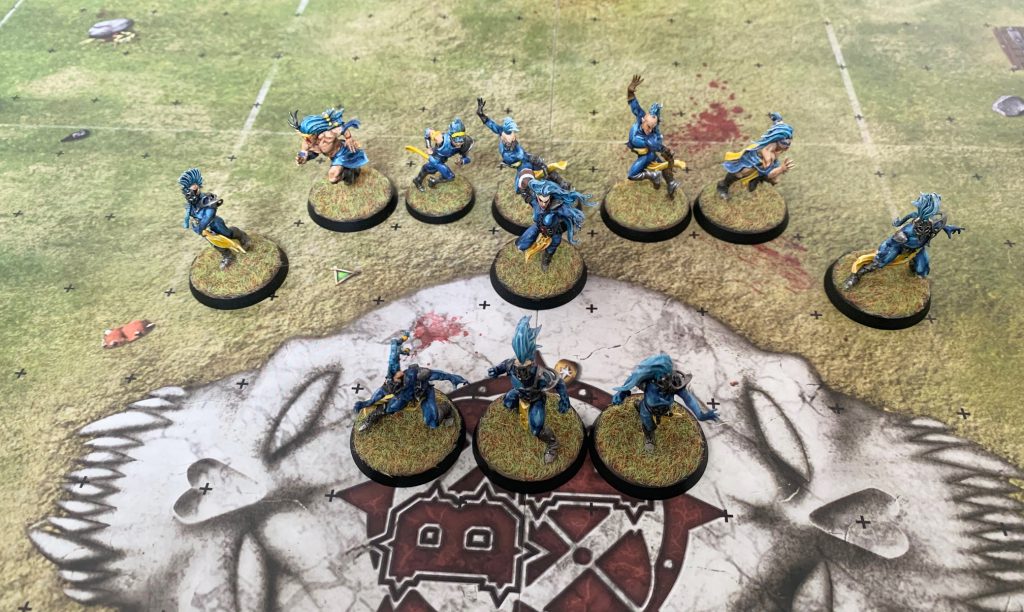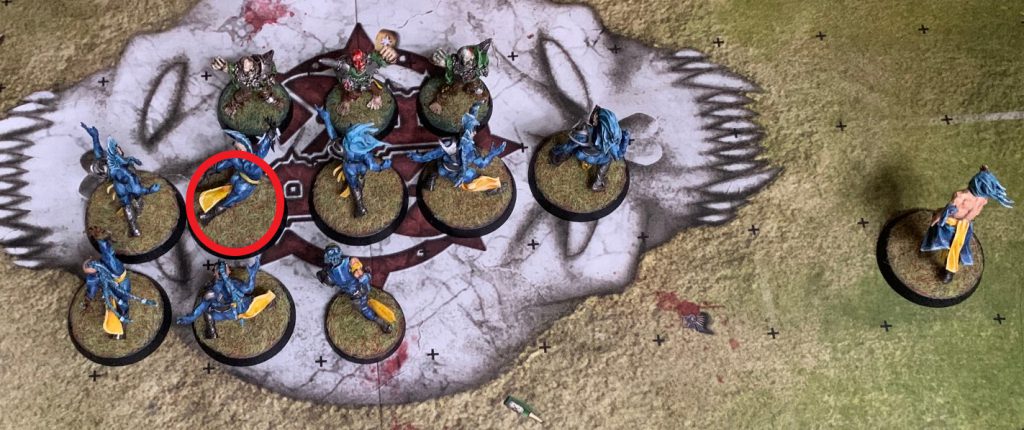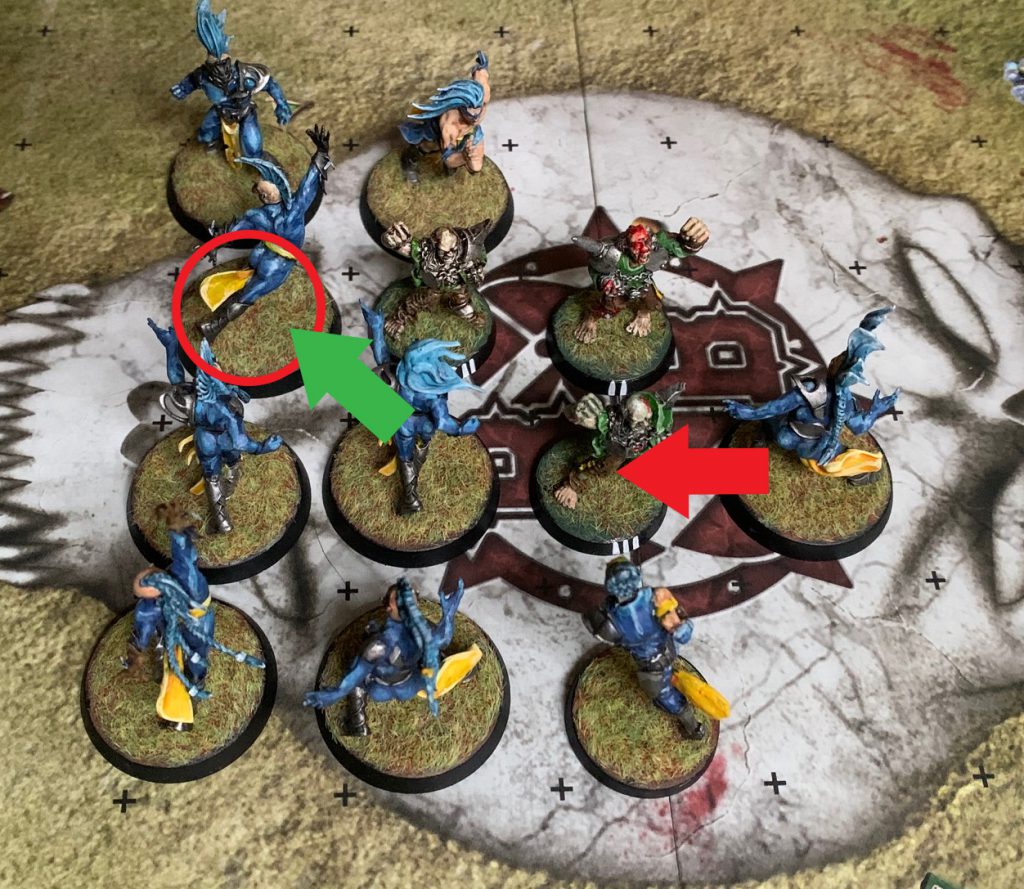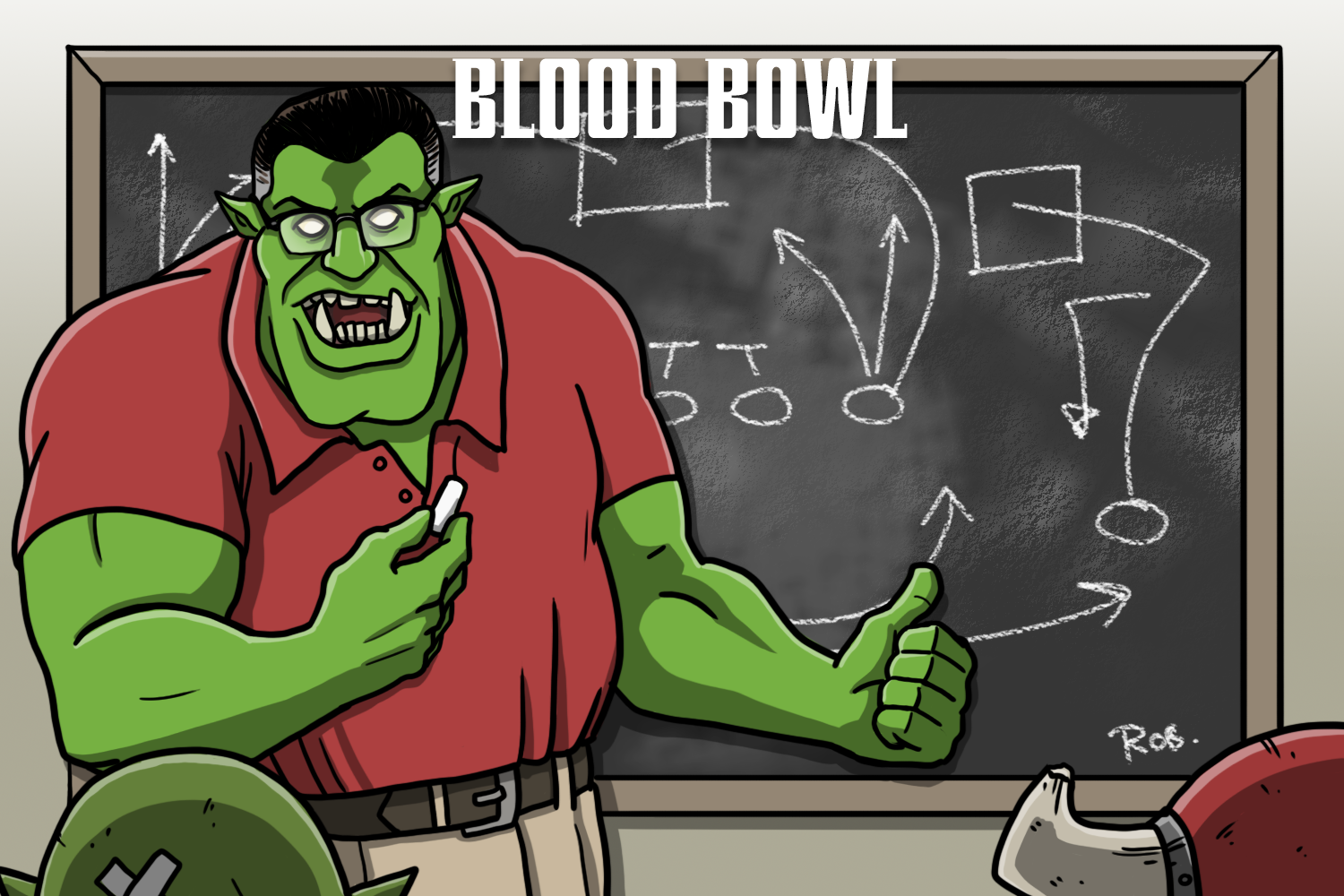A few years ago, while playing a tabletop game against a relatively new player, they said “I read all these kick-off setup guides and they are all for eleven players, but it seems like I never have eleven players”. What this astute player had stumbled upon was a truth also expressed by Prussian Field Marshal Helmuth Von Moltke when he wrote in 1871 “No plan of operations extends with any certainty beyond the first encounter with the main enemy forces”, or more succinctly by Mike Tyson in 1987: “Everybody has plans until they get hit”.
Blood Bowl is a dynamic game. You cannot simply place your minis and execute some wombo combo at the time of your choosing. Your kick-off setups, much like every aspect of your strategy, must be both:
Pragmatic – that is, they must reflect your particular team’s needs and capabilities in that particular moment of the match
Flexible – they must be able to adapt to whatever dice-based hell Nuffle throws at you.
Kick-offs in particular are uniquely susceptible to the rolls on the Kick-off and Weather tables, and a good number of these either allow one coach to reposition, or force the removal or inaction of players. Any kind of rigid or dogmatic approach to how you should set up your team is a waste of time; it will either not be relevant in the moment, or it will not be possible. Moreover, quite often the small margins and value of specific placement on kick-off are really not that important. I very often see players agonising over their setup positioning and know that there is really no need for it.
In this article I am going to explain some principles that should guide your setups instead, so that you can determine what is best for you and your team depending on the game state.
Offensive setups
Let’s start with a simple one: pre-planned offensive setups of any kind are totally worthless, with one exception, which is for one-turn touchdowns, which we’ll look at in more detail later.
Your offensive setups have only three goals to achieve:
- Ensure that you have a potential ball-carrier who is likely to be in a position to pick up the ball
- Ensure that you have setup in such a way that you can reasonably score a touchdown in however many turns remain
- Ensure that you have planned for the risk of a Blitz or other kick-off event, or made a decision that you will prioritise one of the previous goals over mitigating this.
“But,” I hear you cry, “You’ve forgotten a goal: kill all mens on the LOS!” Well, heretical as it may be, that is an optional goal. There certainly are many ways to optimise LOS blocking depending on who you and your opponents are, but they are only steps toward Goal 2.
In fact, despite the obvious necessity of Goal 2, this is one of the easiest to get wrong, especially when you need to score in two or three turns. Simply working out that your ball carrier can get the thirteen squares to the end zone is not normally enough; you must have a plan of how they will be protected and screened from hits along the way, and your setup must facilitate it.
Planning to overload one side if the field can be anywhere from very effective to an absolute necessity when time becomes a factor, as you will find that both your own and opposition players simply cannot reach certain areas of the pitch. So simply setting up to cover the width of the field, or being symmetrical for the aesthetic satisfaction of it, should be replaced by focusing on your goal for your drive and how each of your players will contribute.
Here is an example of a very simple setup that you might use early in drives and that requires little thought:

Our Thrower is sitting deep with the aim of being our primary receiver of the ball. We have some cover and natural screens in other areas of the pitch in case the kick lands in an awkward spot or the kick-off results go against us, and we have plenty of flexibility in where we take our first turn. Most of the specific placement here is not important, a square here or there will not change much.
Defensive Setups
There are three main goals of defensive setups:
- Protect your players from damage or being surfed
- If the game situation calls for it, prevent your opponent scoring quickly
- If the game situation calls for it, prevent a one-turn touchdown
There are two defensive setups that broadly cover goals 1 and 2, while the third will require more specific positioning depending on what kind of one-turn threat you face. Let’s start with Goal 1:

But my opponent can just run down the sideline! Sure, and there are two reasons why this is not a problem. The first is that you are likely to have a lot of players free who can react and shut that down, and the second is that should the worst happen and you concede a very quick touchdown it is actually far from the worst thing in the game.
The above setup is also a generally good option when you are down players, as it will limit further damage, and you are going to be unable to cover the width of the field effectively anyway.
For that kind of coverage, let’s look at setup that gets us some way to Goal 2:

This is a good general setup that largely also achieves Goal 1 and can be used in many game situations beyond preventing quick scores. Our team has good coverage of the field, we have a double defensive line that can not easily be walked through, and we can still react quite well to a concerted push down one flank – though we might find one or two players struggling to make it back across the pitch.
Note how this setup prevents the second part of Goal 1, being surfed. If either of the players on the edge of the first rank are one square close to the sideline, they are surf bait. It can be very easy to forget this when setting up defensively, and I see even experienced players doing this all the time. Whenever an opponent has Frenzy you should consider the possibilities.
Asymmetric setups
This is a special kind of heresy that will upset those of a certain disposition. Asymmetric setups are a potent defensive tool for agile and mobile teams, as they can force offenses to make tough decisions about whether to react to them or to run the risk of finding themselves in unfavourable situations if the kick and kick-off events (especially Blitz and Solid Defence) go against them.
The main gist of the approach is simply to shove your three LOS players to one edge of the centre box. You can then follow in a very strong way, by straight up refusing to cover the width of the field with the rest of your players, daring your opponent to match up with you, or you can do it in a slightly weaker way by showing a strong threat whilst still covering your bases.
Asymmetric setups are a strong approach when you have either: time on your side to deal with the kick-off not falling your way and want to take a gamble; or a pressing need to score quickly and change the flow of the game. They can create highly favourable pitch states for either team, and can particularly unsettle bashy and slower offenses who want consistency and control.
One turn-touchdowns
One turn-touchdowns are one of the very few cases in Blood Bowl where you do generally need very specific setups. In fact often you need very specific players, and sometimes even specific skills.
It would be impossible here to list and explain the various possible one-turn scores, and this article is more concerned with talking about principles anyway., so I’ll once again refer you to an excellent resource at FUMBBL that shows various examples and the principles behind how they work.
The most important thing to understand is that there are two main kinds of one-turn TD you can score and that can be scored against you:
- One turn-touchdowns using chain-pushes and players with high movement values.
- One turn-touchdowns achieved by Throw Team-Mate.
Offensive one-turn setups
Let’s look at a simple one-turn chain push:




As you can see, even this ‘simple’ version is not so simple, requiring some very specific positioning, dice results, and to a certain extent, your opponent obliging you in their defensive setup.
With any such attempt, it’s important to remember that at some point the player being chain-pushed has to receive the ball. You must be able to pick the ball up and either pass or hand it off to them, and very often that means going through or over opposition traffic. For this reason, the final push can be a knockdown instead to ensure the scorer is not in Tackle Zones.
And here’s a one-turn Throw Team-mate setup:

The most important aspect of setups for TTM scores is the pickup and delivery mechanism to the scorer. You must position and allow enough movement for a player to pick up the ball and hand-off to the scorer, as you need your Pass action for the TTM. This limitation means that some kick landing locations will make the attempt impossible.
The other important point is to ensure your thrower is in as few Tackle Zones as possible (ideally none), so as to avoid the possibility of a Terrible Throw. In the picture the general goal is that one Troll (or the Goblin with some assists) will remove any players basing the Troll who will be throwing. There a re a multitude of other considerations and technicalities in the world of TTM scores, and I would advise those interested to do some further research and practice.
Defensive one-turn Setups
There are very few teams that can manage both kinds of one-turn score (Underworld being a notable case), which means mostly you can setup to defend against one or the other. There has been copious debate on defensive setups versus one-turning, but here are a couple of examples:
Versus Chainpushes

Coaches hate this one simple trick to prevent elf bullshit! Like many other setups this can still be beaten, but it requires very little thought, is effective at making blocks and positioning hard, and asks the opponent to roll a lot of dice to succeed.
An alternative to this is to do something more nuanced with three on the LOS and double gapped two-layered screens behind. This asks chainpushers to make tough dodges, but does make the initial push easier.

Another thing to bear in mind for defenses against chainpushes is that skills like Stand Firm and Sidestep in the right place can completely shut them down. If you have three players with these skills you often don’t need to do much more than put them on the LOS and everyone else out of the way.
Versus Throw Team-Mate

The basic concept here is that your players occupy the spaces where the opponent’s carrier hopes to land, and then also covers some squares where they will then need to run through. Against TTM attempts, Kick is a very powerful weapon, as it can make some recoveries impossible to hand-off to the intended scorer, and negate the whole attempt immediately.
Outro
I’m aware there is a large appetite for kick-off setups in the BB community. I understand why, particularly for newer players, but I think beyond the absolute basics and ‘gotchas’ this is mostly a misplaced desire. The setups shown and discussed in this article are imperfect examples that would need to be tweaked for your particular team and your particular opponent in your particular game state, and very often probably with less players available than demonstrated. I hope that this article has successfully made the case that thinking about the higher level goals and strategy of the game situation when you set your players up is more important than getting lost in the weeds of placement.
As always we’d love to hear your thoughts and feedback, and if you have any suggestions or ideas you can reach out to us at contact@goonhammer.com.



You must be logged in to post a comment.